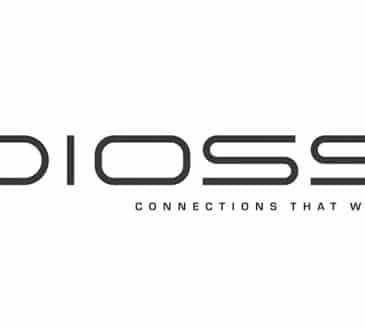Professionalism in Virtual Meetings: How It Impacts the Remote Work Debate

Professionalism is open to interpretation — to an extent. After all, more than a few industries abide by different norms. For instance, you might see tattoos and dyed hair in creative spaces, but not in a sector like law or healthcare. Professionalism at work depends on your industry, your company’s culture, and your team members’ job roles. However, when it comes to managing remote teams, there are some common guidelines you can implement.
As the leader of your company, you know quite well all the way the work environment has changed drastically since the start of the pandemic. Almost overnight, millions of people found themselves working remotely. Three years later, most people prefer to maintain a similar level of flexibility: McKinsey’s report on 2022 remote work trends reveals that 87% of workers telecommute at least one day a week.
However, the shift from the office to home has led to a few repercussions, chief among them involving professionalism — or a lack thereof. Think about the last time you were on a virtual call. Chances are, you saw people in sweatshirts, t-shirts, and hats or backgrounds of bedrooms and messy counters. Even when calls are scheduled in advance, participants sometimes appear as if they were caught unawares. People have simply forgotten that their appearance and surroundings are a reflection of their companies and affect others’ perceptions.
This can lead executives to believe that going back to the office is the best choice. Google’s former CEO mentioned that there are “practicalities to working in person,” such as having easier conversations around professionalism with young employees. And while this New York Times article doesn’t mention professionalism, all of the employees in the photos are wearing standard office attire.
Yes, it’s officially time to address virtual professionalism at work.
The Effects of a Lack of Professionalism in Virtual Meetings
People don’t realize that a lack of professionalism can severely impact the results of a remote interview or sales meeting. For example, I met with a vendor representing a big business services brand, and he showed up wearing a baseball hat. This isn’t something I consider professional, so it made me feel like I wasn’t an important enough prospect.
Not only can a lack of virtual professionalism lead to a missed hire or sale, but it can also put entry-level candidates at a disadvantage. Remote meetings can only take interpersonal connections so far; new hires aren’t able to see how coworkers interact or present themselves. They’re not able to witness professionalism first-hand, which could lead them to mistake what “professional appearance” means.
Moving forward, you as a company leader must share business professional guidelines for remote webinars, meetings, conference calls, and interviews. Company handbooks already detail how people should dress when coming into the office. The same should hold true for interactions in the virtual realm.
Establishing Professionalism Guidelines for Remote Teams
Professionalism is open to interpretation — to an extent. After all, more than a few industries abide by different norms. For instance, you might see tattoos and dyed hair in creative spaces, but not in a sector like law or healthcare. Professionalism at work depends on your industry, your company’s culture, and your team members’ job roles.
However, when it comes to managing remote teams, there are some common guidelines you can implement. At Sales Xceleration, we polled people on LinkedIn to determine what these best practices are. Here’s what we found:
- Don’t wear baseball hats. Baseball hats are pretty much a no-go; 90% of people we surveyed feel it’s not appropriate to wear them during a virtual call. So, encourage your remote team to save their hats for virtual happy hours.
- Turn video on for meetings. Though people might prefer to turn off their cameras and relax, our poll found that most workers (68%) always have their video on. Why? Face-to-face interactions increase trustand boost engagement. By establishing camera etiquette with your remote workers, you can improve alignment and drive better outcomes.
- Consider using a virtual background. Though 52% of workers we polled use whatever is behind them as their backgrounds, a messy room can be distracting and is unprofessional. That’s why 35% said they choose to use professional backgrounds like a company logo and another 13% use backgrounds that reflect their personalities. If your company doesn’t already have a branded background, consider having one created.
- Treat remote meetings the same as in-person ones. About 77% of people we surveyed treat virtual calls with the same respect as in-person meetings. Only 16% said they treat them differently, and 8% have never thought about it. If your team isn’t “showing up” the same way for virtual meetings, then you’ll need to work toward a mindset shift.
Workers don’t need to dress formally all the time, but it’s important to appear put together and practice virtual professionalism at work. Encourage your team to think about and know their audience and prepare their attire and background accordingly for the call. Let your workforce know that following these best practices is a sign of respect, and it tells other people a lot about your company. Although the way people work is changing, you’ll want to encourage your team to always strive to impress the other party.
Written by Maura Kautsky.
Have you read?
The opportunity for success in 2023 is yours by Ingrid Maynard.
A First-Rate Family Enterprise Involves Collective Learning by Wendy Sage-Hayward.
Leading as a Purple Making by Dr. Chip R. Bell.
The new arena of tourism entrepreneurship by Prof. (Dr.) Manoj Joshi.
POST-PANDEMIC LEADERSHIP: New Challenges for Positive Influence Leaders by Glenn Parker.
Add CEOWORLD magazine to your Google News feed.
Follow CEOWORLD magazine headlines on: Google News, LinkedIn, Twitter, and Facebook.
Copyright 2024 The CEOWORLD magazine. All rights reserved. This material (and any extract from it) must not be copied, redistributed or placed on any website, without CEOWORLD magazine' prior written consent. For media queries, please contact: info@ceoworld.biz









